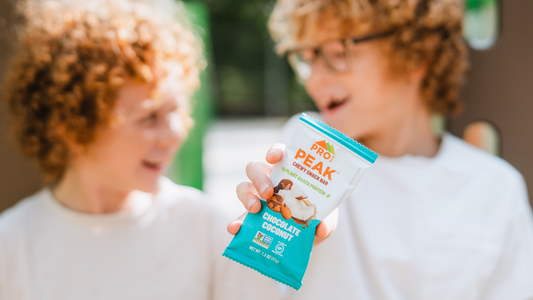Ryan Light, a PROBAR user and avid runner, shares some active ways to help overcome anxiety. All of us at times have stressful days, days in which we don't feel like doing anything because the stress of day has wiped us out. However, many of us deal with stress and anxiety as a common occurrence in our life.
This daily stress can lead to lifelong battles with disorders such as panic and anxiety. I was one of those individuals. The daily stress of work, family, bills, you know life, brought me to a breaking point in which the daily stress turned into anxiety and panic attacks.
This lasted for quite some times (years) until I made a decision to break the cycle and get out and start exercising. Once I got into a habit of daily exercising my anxiety and panic slowly faded, did it go away entirely? No! But it became manageable for me to enjoy life once again.
Below are some tips to break the cycle of stress and anxiety in your life.
Break a Sweat for Depression Relief
Could a trip to the gym be just what the therapist ordered? Exercise certainly isn’t a depression cure-all, but a study published in the Journal of Sport and Exercise Psychology found that heart-pumping, endorphin-boosting workouts actually promote happiness.
Researchers say that more physically active people reported greater general feelings of excitement and enthusiasm than less-active people. And beyond its protective effect against feelings of depression, exercise may reduce stress and help you secure a better night’s sleep. That’s why your favorite fitness routine can be an excellent addition to your depression treatment plan. “Exercise stimulates the release of many of the brain chemicals thought to be in low supply when someone is battling depression,” explains David Muzina, MD, the founding director of the Cleveland Clinic Center for Mood Disorders Treatment and Research.
1 - Set off That Runner's High
When it comes to workouts that fight depression, aerobic and cardio exercises have the edge. “To date, the strongest evidence seems to support aerobic exercise,” says Dr. Muzina. While the correct "dose" of depression-fighting exercise is up for debate, some experts recommend 20 to 30 minutes most days of the week.
A recent review of numerous scientific studies found no association between the intensity level of the exercise and its emotional benefit — so simply moving more is a great start. We LOVE to bring some PROBAR BOLT with us on our runs.
Ever heard of runner’s high? “The most tangible example of exercise stimulating certain brain chemicals is the runner’s high that many athletes report experiencing once crossing a certain threshold of exertion while running,” explains Muzina. That euphoria is due to the release of endorphins in the brain in response to the sustained physical activity.
“Endorphins are our body’s natural morphine and, when released by special glands in our brains, they can produce a sense of well-being or joy and also decrease pain levels."

2 - Build Your Muscles
Boost your strength, boost your happiness? A recent study of 45 stroke survivors with depression found that a 10-week strength training program helped reduced symptoms of depression (among numerous other benefits).
“Strength training is about mastery and control,” says Leslie Seppinni, PhD, a clinical psychologist and family therapist in Beverly Hills. “It requires full attention and concentration. More importantly, people can see the results, the outline of the muscles forming, from dedication and training.”
Just be sure to start slowly and use the assistance of a personal trainer if needed. A PROBAR PROTEIN is a great way to kickstart your recovery with over 20g of plant-based protein.
3 - Get Your Walk On
Simply putting one foot in front of the other may be the trick to feeling better — that’s because walking is an aerobic exercise that’s suited for almost everyone. All it takes is a pair of comfortable, supportive shoes, and you’re ready to go. “Practical wisdom suggests that doing something is better than doing nothing in terms of physical activity,” says Muzina. If depression has made you sedentary, start off slowly and gradually increase time and distance.

4 - Go Play Outside
If you enjoy being outdoors, even simple activities such as gardening, throwing a ball around with your kids, or washing your car may do you some good. That’s because a healthy dose of sunlight has been shown to boost mood, likely due to the fact that sunshine stimulates our serotonin levels (drops in serotonin during the darker, colder months have been linked to seasonal affective disorder, or SAD).
“Just moving your body inside or out is exercise,” says Shoshana Bennett, PhD, a clinical psychologist and author of Postpartum Depression for Dummies. “Choose whatever works for you, depending on your functioning level, energy, and preferences.”
5 - Bounce!
Want something super-simple to break you out of a funk — at least temporarily? Be bouncey. “You don’t need to jump, but bend your knees and bounce as quickly as you can for a few minutes,” says Bennett. “This is an easy way to oxygenate your brain and get some endorphins flowing.”










